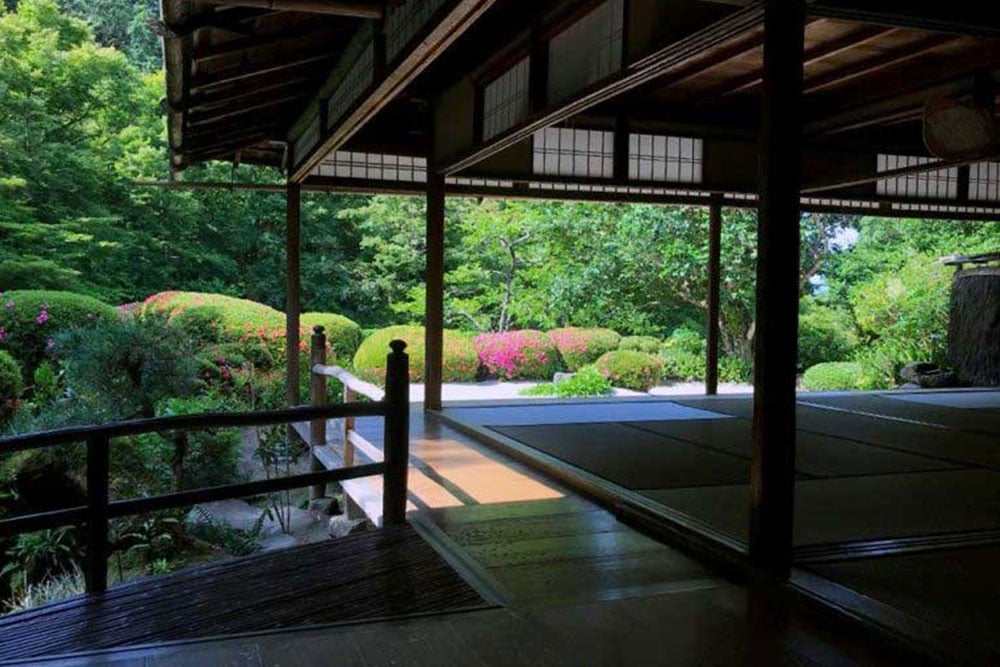-1%20.jpg?width=878&name=Blue-said-(EYRC-Engawa-Feature)-1%20.jpg)
Written by Takashi Yanai
Some of the elements of Japanese architecture that resonate with our firm’s work include a connection to the outdoors, the use of layered landscapes and contemplative courtyards. These moments inspired me during my time growing up in Japan and influence our approach to designing single family residences today. Specific building elements such as shoji (sliding partitions) and shou sugi ban (a type of charred wood) are also traditional Japanese techniques that have appeared, reinterpreted, in our projects.
A design element that is extremely common in Japanese architecture, and which can very easily be incorporated into your modern home design, is a concept known as engawa.
Below, we define engawa and provide a number of examples of modern homes which leverage the technique to stunning effect.
What is engawa?
In traditional Japanese architecture, an engawa is a covered corridor which runs around the outside perimeter of a building. It’s an extension of the indoor space to the outdoors that creates an important transitory space between the interior and exterior of the structure. They are typically constructed out of wood, and raised above the level of the exterior so that the individual must “step up” into the building.
 Example of Engawa. Image courtesy Welcome-to-Kyoto.com
Example of Engawa. Image courtesy Welcome-to-Kyoto.com
Whereas an engawa traditionally runs around the entire perimeter of a building, modern interpretations are often more limited in scope. Instead of circling a home, for example, it is not uncommon for a modern engawa to be situated only off of certain interior spaces, such as a living room or dining area which then opens out into the yard. The effect is a blurring of the boundary between indoor and outdoor space that really lends itself to the overarching themes of California modernism.
Examples of Engawa in Modern Residential Architecture
1. Kingsland
The engawa featured in the Kingsland residence offers more of a traditional take on the technique, even as it is utilized in a modern home. Large sliding doors outside the dining room are capable of opening and pocketing completely away. This allows those sitting at the table to immerse themselves in the outdoors, with fresh air and lush greenery, even while technically still seated inside.

2. Irvine Cove
In order to take advantage of the beautiful ocean views near the site of the Irvine Cove residence, it was imperative that the house be constructed so that the finished floor sat at the appropriate height. Too low, and the view would be obscured; too high, and the elevation would feel inappropriate. Incorporating an engawa into the design proved to be an effective means of getting the height just right.

The living room in the home features an expansive glass wall that can quite literally be pocketed away in order to open the home out onto the wooden deck. The same stone material that forms the floor of the interior space extends into the exterior for several feet. This extension of the interior materials into the outdoors goes far in blurring the boundaries between indoors and outdoors, and forms a key piece of the home’s engawa.
3. Spring Road
The engawa created for the Spring Road residence is reinterpreted by creating an architectural extension that is raised above the landscape, it works to make the living area feel larger and helps to make the indoors and outdoors feel more connected, just as a traditional engawa would.

This was achieved by consciously designing the deck so that its geometry coincides exactly with that of the living room. The end result is the creation of a sort of middle ground between interior and exterior space; a room that can be opened up or closed as necessary.
Traditional Japanese Design Elements with a Modern Twist
Engawa is one of the most common, defining characteristics of traditional Japanese architecture. The fact that it aligns so well with the themes that guide modern architectural design makes it an excellent candidate for incorporation into your custom home. As seen in the examples discussed above, there are many opportunities to leverage engawa in either traditional or experimental ways to invite natural light, fresh air, and the peace and beauty of the outdoors into your home to create a space that is truly unique.

Written by Takashi Yanai
Takashi Yanai is a Partner at Ehrlich Yanai Rhee Chaney Architects and has been Residential Studio Director since 2004. Takashi is also currently leading EYRC’s San Francisco Studio. Prior to practice, Takashi was a design journalist and editor at GA Houses in Tokyo where his work and travels provided the seeds for his design philosophy. Today his work is rooted in its contemplative relationship to landscape and is a continuation of the California Modernist ethos infused with reinterpretations of traditional Japanese elements. In 2017 he was elevated to the AIA College of Fellows in recognition of his residential work, which articulates how architecture can “connect man and nature through masterful siting and exceptional craft.” Takashi serves on the SFMOMA Photography Accessions as well as the Architecture+Design Accessions Committees and has also been appointed the Chair of the National AIA Committee on Design for 2021. His professional activities, travels and personal inspirations are well-documented and widely followed (57,000 followers) on his Instagram account @t_yanai. Takashi has a degree in Literature with distinction from the University of California at Berkeley and a Masters in Architecture from the Harvard Graduate School of Design.
